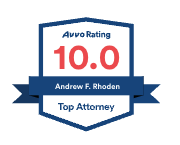The Most Common Mistakes in Staff Handbooks and How to Avoid Them
An employee handbook is one of the most critical documents a business can create to ensure smooth operations and legal compliance. It outlines company policies, expectations, and workplace procedures, helping employees understand their rights and responsibilities. However, many businesses make costly mistakes when drafting their employee manual, leading to legal challenges, misunderstandings, and reduced employee engagement.
In this article, we will examine the most common mistakes in staff handbooks and how to avoid them, ensuring your handbook reflects company culture, complies with federal law, and supports business operations.
Common Mistakes in Employee Handbooks
1. Using a Generic Employee Handbook Template Without Customization
While an employee handbook template can help save time, relying on a generic template without customization can create compliance risks. A well-crafted employee manual should reflect your company's history, industry standards, and local laws.
How to Avoid This Mistake:
- Work with legal professionals to create a custom employee handbook that aligns with your business’s specific needs.
- Ensure that all workplace policies, company expectations, and applicable federal regulations are included.
- Regularly review and update your handbook to reflect changes in business operations and employment policies.
2. Failing to Address Company Culture
A staff handbook should do more than outline rules; it should also inform employees about your company culture. Neglecting this aspect can lead to disengaged employees who do not understand the company's values or mission.
How to Avoid This Mistake:
- Clearly articulate your company’s mission, values, and work environment in the handbook.
- Include a section that highlights how employees contribute to maintaining a positive workplace.
- Provide examples of employee behavior that align with the company’s core values.
3. Not Keeping the Handbook Updated
Outdated employment policies can lead to legal issues and employee confusion. Changes in federal and local laws, business needs, and workplace regulations should be reflected in the handbook.
How to Avoid This Mistake:
- Conduct an annual review of your employee handbook.
- Work with legal professionals to ensure compliance with new laws and regulations.
- Inform employees of any updates and require acknowledgment of new policies.
4. Unclear Workplace Policies
Vague language in workplace policies can create confusion and open the door to legal disputes. Employees should clearly understand what the company expects regarding dress code, working hours, performance reviews, and company property usage.
How to Avoid This Mistake:
- Use clear, concise language when creating an employee handbook.
- Provide detailed descriptions of company policies and expectations.
- Include specific procedures for addressing workplace issues, such as anti-harassment policies and workers' compensation claims.
5. Overlooking Federal and Local Laws
Ignoring federal and local employment laws when drafting a handbook can result in legal consequences. Many businesses fail to include policies related to paid time off, workers’ compensation, and anti-harassment measures.
How to Avoid This Mistake:
- Ensure the handbook complies with federal law and local regulations.
- Include required policies related to equal employment opportunities, wage regulations, and employee rights.
- Work with a legal expert to ensure compliance with applicable laws.
6. Not Specifying Employee Benefits and Compensation Policies
An employee handbook should clearly outline employee benefits, compensation, and other perks offered by the company. A failure to do so can lead to misunderstandings and dissatisfaction.
How to Avoid This Mistake:
- Include a section detailing health insurance, retirement plans, paid time off, and other benefits.
- Clearly define eligibility requirements and procedures for accessing benefits.
- Regularly update policies to reflect current benefits.
7. Neglecting to Address Conflict Resolution Procedures
Many businesses do not include clear conflict resolution procedures in their employee handbook. This can lead to unresolved disputes, workplace tension, and potential legal challenges.
How to Avoid This Mistake:
- Establish a clear process for handling workplace conflicts.
- Define how complaints will be investigated and resolved.
- Include an open-door policy that encourages employees to address concerns directly with management.
8. Excluding an At-Will Employment Disclaimer
Failing to include an at-will employment disclaimer can create legal complications. Employees may assume they have guaranteed job security, leading to potential wrongful termination claims.
How to Avoid This Mistake:
- Clearly state that employment is at-will and can be terminated by either party at any time.
- Avoid language that implies guaranteed employment or permanent positions.
- Have employees sign an acknowledgment of the at-will policy.
9. Not Addressing Technology and Social Media Policies
Modern businesses rely on technology, but many employee handbooks fail to include policies on social media usage, data security, and appropriate use of company property.
How to Avoid This Mistake:
- Establish clear guidelines on personal and professional social media use.
- Define rules for company email, internet usage, and data security.
- Provide training on protecting sensitive company information.
10. Overcomplicating the Handbook
Some businesses create overly complex and lengthy handbooks, making it difficult for employees to understand essential information. A poorly structured handbook can lead to employees overlooking key policies.
How to Avoid This Mistake:
- Keep the handbook organized with clear headings and sections.
- Use bullet points and simple language where possible.
- Ensure new hires can easily access and understand the document.

The Most Common Mistakes in Staff Handbooks and How to Avoid Them
Many employers assume that a basic set of policies is enough for an effective staff handbook, but failing to reference employee handbook examples can result in incomplete or unclear guidelines. A strong handbook should provide a clear code of conduct, detail employee training requirements, and set expectations for new employees in a way that aligns with the organization's culture and legal obligations. By reviewing well-structured employee handbook examples, small businesses can avoid common pitfalls such as vague policies, outdated regulations, and inconsistent disciplinary procedures.
Employers should also ensure that handbook policies are directly related to their business operations and industry standards. A poorly written handbook can create confusion among the team, leading to legal disputes and compliance issues. Utilizing HR services can help businesses easily create a handbook that makes employees aware of their rights, responsibilities, and workplace expectations. Whether operating in a corporate setting or a small office, an effective handbook allows employees to determine how company policies apply to their roles, ensuring a well-informed and compliant workforce.
Avoiding the Most Common Mistakes in Staff Handbooks: A Guide for Employers
Creating an effective staff handbook is crucial for small businesses and larger organizations alike, yet many employers make critical errors that can lead to confusion, legal risks, and inconsistent workplace policies. One of the most overlooked mistakes is failing to provide employee handbook examples that set clear expectations for new employees and seasoned staff. A well-structured handbook should outline a comprehensive code of conduct, detail employee training procedures, and define company policies in a way that is both legally sound and easy to understand.
Employers must also ensure that handbook policies are directly related to their company’s values, culture, and industry regulations. An ineffective handbook can lead to misinterpretations that affect team performance, workplace compliance, and overall organization. To easily create a handbook that aligns with best practices, businesses should consult professional services that specialize in HR compliance and legal documentation. Additionally, a well-crafted handbook should help employees determine their rights and responsibilities while making them aware of workplace expectations. Whether working remotely or in an office, a handbook serves as a foundational document that ensures clarity and consistency for the entire team.
Staff Handbook Mistakes Small Businesses Must Avoid
For small businesses, one of the most common mistakes in staff handbooks is failing to provide clear policies on working hours and expectations for new hires. Without a well-defined structure, employees may struggle to understand company policies, leading to inconsistencies in scheduling, attendance, and overall workplace behavior. A strong handbook should outline essential details, such as employee training, the code of conduct, and guidelines on time tracking, breaks, and overtime to ensure compliance with labor laws.
By reviewing employee handbook examples, small businesses can easily create a comprehensive document that makes policies clear to new hires from day one. Additionally, a well-organized handbook helps determine how workplace policies apply to both in-office and remote employees, ensuring the entire team is aligned. Utilizing HR services to draft a legally sound handbook can also make employers aware of potential compliance risks and best practices for maintaining a productive and legally compliant organization.
Avoiding Common Staff Handbook Mistakes: A Guide for Employers
One of the biggest mistakes employers make when drafting a staff handbook is failing to provide clear guidance for new employees. A well-structured handbook should serve as a roadmap for workplace expectations, including policies on employee training, workplace behavior, and the company’s code of conduct. Without clear direction, new employees may struggle to integrate into the organization, leading to confusion and inefficiencies.
By reviewing employee handbook examples, businesses can easily create a comprehensive resource that addresses common workplace concerns and ensures all employees are aware of their rights and responsibilities. This is especially important for small businesses, where proper onboarding can directly impact productivity and team cohesion. Utilizing professional HR services can help determine the most effective way to structure policies so that all employees, whether in an office or remote setting, fully understand their roles and expectations.
Creating a Custom Employee Handbook: Avoiding Common Mistakes
For small businesses, one of the most common mistakes in staff handbooks is failing to provide clear policies on working hours and expectations for new hires. Without a well-defined structure, employees may struggle to understand company policies, leading to inconsistencies in scheduling, attendance, and overall workplace behavior. A strong custom employee handbook should outline essential details, such as employee training, the code of conduct, and guidelines on time tracking, breaks, and overtime to ensure compliance with labor laws.
By reviewing employee handbook examples, small businesses can easily create a comprehensive document that makes policies clear to new hires from day one. Additionally, a well-organized handbook helps determine how workplace policies apply to both in-office and remote employees, ensuring the entire team is aligned. Utilizing HR services to draft a legally sound handbook can also make employers aware of potential compliance risks and best practices for maintaining a productive and legally compliant organization.
Contact Masterly Legal Solutions for a Free Consultation
At Masterly Legal Solutions, we understand the complexities of creating an employee handbook that meets your business’s needs while ensuring legal compliance. A well-structured employee handbook can save time, reduce legal risks, and improve employee engagement by ensuring workers understand their rights and responsibilities.
If you need help creating or updating your employee handbook, our legal professionals can guide you through the process and ensure your policies align with federal law and industry standards. Contact us today at (972) 236-5051 for a free consultation, and let us help you establish a legally sound handbook tailored to your business.
Notice: This article is not legal advice; it is merely informational in nature. For individualized legal advice, please speak with an experienced lawyer.


Looking for Legal & Business Solutions? Contact Us Now
Fill in the form or call us to set up a meeting












